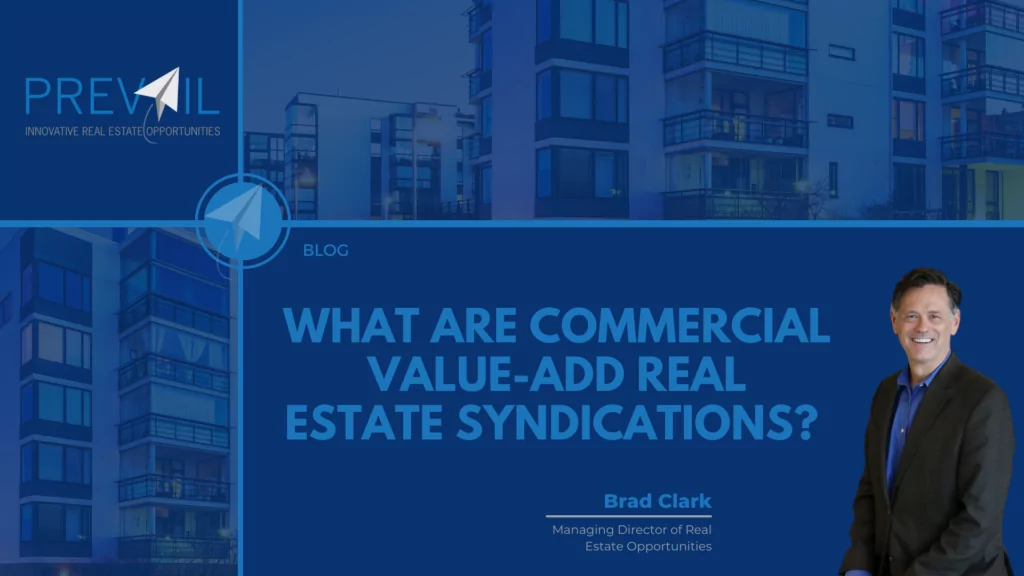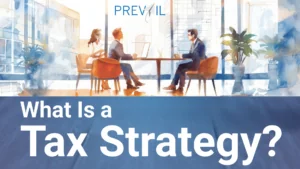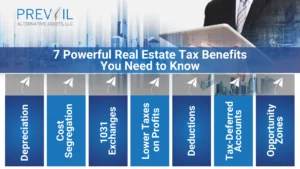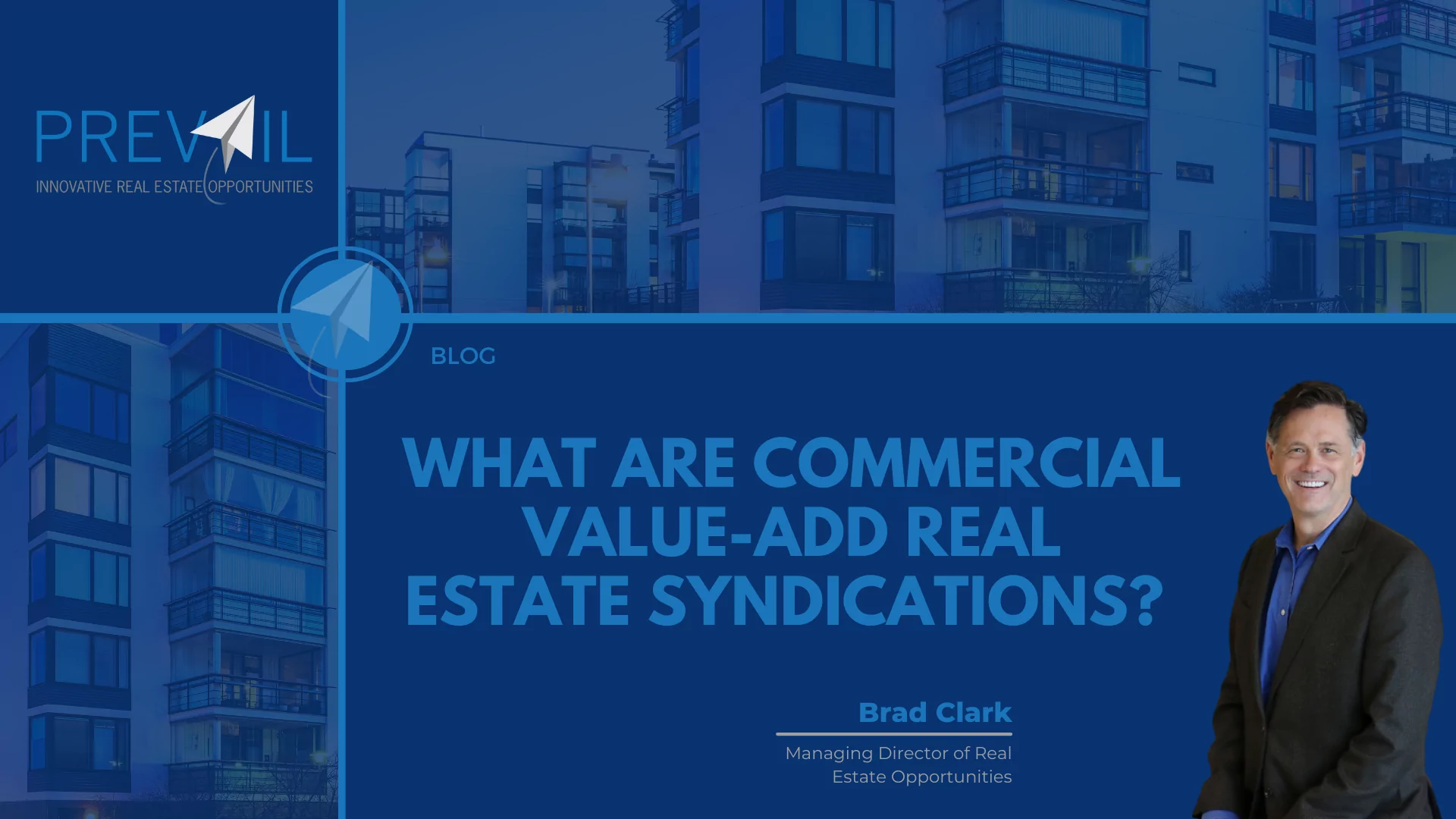Have you re-homed or refurbished hand-me-down furniture before? I remember my mom repainting a bookcase that had been in my grandmother’s house.
Imagine the joy in acquiring an old, unwanted bookshelf, all while knowing it has potential. Its solid construction, classic design, and good condition convince you to lug it home and give it a fresh coat of paint.
A little elbow grease later, you set it in the perfect spot and let it quietly transform the room. That heirloom bookcase is still in my mother’s home and I look forward to inheriting it one day.
With refurbished, rehomed furniture you have the opportunity to take a diamond in the rough, commit some sweat equity, and breathe new life into it. This is the essence of value-add, and it’s a commonly used strategy in real estate investing. We’ll use the example of a multi-family property in this article, but the concepts apply equally to office buildings, retail, warehouses, and more.
The Basics of Value-Add Real Estate
In the case of single-family homes, the process of buying a run-down property, remodeling it, and then selling it for profit, is commonly referred to as fix-and-flip. Your sweat equity and ability to see a diamond in the rough is rewarded monetarily, and the new owner gets an updated, move-in-ready home.
Value-add real estate deals follow a similar model, but on a massive scale. Hundreds of units get renovated over years at a time instead of just one single-family home over a few months.
A great value-add property may have peeling paint, outdated appliances, or overgrown landscaping, which all affect the curb appeal and the initial impression that a potential renter will form. Simple, cosmetic upgrades can attract more qualified renters and increase the income the property produces.
In value-add properties, improvements have two goals:
- To improve the unit and the community (positively impact tenants)
- To increase the bottom line (positively impact the investors)
Value-Add Examples
Common value-add renovations can include individual unit upgrades, such as:
- Fresh paint
- New cabinets
- New countertops
- New appliances
- New flooring
- Upgraded fixtures
In addition, adding value to exteriors and shared spaces often helps to increase the sense of community:
- Fresh paint on building exteriors
- New signage
- Landscaping
- Dog parks
- Gyms
- Pools
- Clubhouse
- Playgrounds
- Covered parking
- Shared spaces (BBQ pit, picnic area, etc.)
On top of all that, adding value can also take the form of increasing efficiencies:
- Green initiatives to decrease utility costs
- Shared cable and internet
- Reducing expenses
The Logistics of a Multifamily Value-Add
The basic fix-and-flip of single-family homes is pretty familiar to most people, but when it comes to hundreds of units at once, the renovation schedule and logistics aren’t as intuitive. Questions arise around how to renovate property while people are living there and how many units can be improved at a time.
When renovating a multifamily property, the vacant units are first. In a 100-unit complex, a 5% vacancy rate means there are five empty units, which is where renovations will begin.
Once those five units are complete and as each existing tenant’s lease comes due for renewal, they are offered the opportunity to move into a freshly renovated unit. Usually, tenants are more than happy with the upgraded space and happy to pay a little extra.
Once tenants vacate their old units, renovations ensue, and the process continues to repeat until most or all of the units have been updated.
During this process, some tenants do move away, and it’s important for projects to account for a temporary increase in vacancy rates due to turnover and new leases.
Why We Love Investing in Value-Add Properties
When done well, value-add strategies benefit all parties involved. Through renovations, we provide tenants a more aesthetically pleasing property, with updated appliances and more attractive community space. By doing so, the property becomes more valuable, allowing higher rental rates and increased equity, which makes investors happy too.
The property-beautification process and the fact that renovated property is more attractive to tenants is probably straightforward. But let’s dive into why value-add investing is a great strategy for investors.
First, Yield Plays
To fully appreciate value-add investments, we must first understand their counterparts, yield plays. In a yield play, investors buy a stabilized asset and hold it for the monthly cash flow and potential future profits.
Yield play investments are where a currently-cash-flowing-property that’s in decent shape is purchased. The property provides a recurring stream of income from the rents collected – the yield. There is obviously a hope to sell it at some later date for a small profit, but there is no business plan to renovate, force appreciation, improve the asset and realize a larger gain at sale. Yield play investors hold property in anticipation of potential market increases, but there’s always the chance of experiencing a flat or down market instead.
Now, Let’s Get Back to Value-Adds
Value plays and yield plays are different. In a value-add investment, significant work (i.e., renovations) takes place to increase the value of the property and doing such improvements carry a level of risk.
However, value-add deals also come with a ton of potential upside since the investors hold all the cards. Through physical action steps that improve the property and increase its value, value-add investors don’t just hold the asset hoping for market increases, they force increases through improving the asset, raising rents and lowering expenses.
Through property improvements, income is increased, thus also increasing the equity in the deal (remember, commercial properties are valued based on how much income they generate, not on comps, like single-family homes), which allows investors much more control over the investment than in a yield play.
Of course, a hybrid yield + value-add investment is ideal. This is where an asset gets improved, cash on cash yields are high and the market increases simultaneously. Investors have control over the value-add renovation portion and the market growth adds appreciation.
Now, before you get too giddy about the potential of a hybrid investment, there are risks associated with any value-add deal.
Examples of Risk in Value-Add Investments
In multifamily value-add investments, common risks include:
- Not being able to achieve target rents
- More tenants moving out than expected
- Renovations running behind schedule
- Renovation costs exceeding initial estimates (which can be a big deal when you’re renovating hundreds of units)
Risk Mitigation
When evaluating deals as potential investments, look for sponsors who have capital preservation of the forefront of the plan and who have a number of risk mitigation strategies in place. These may include:
- Conservative underwriting
- Proven business model (e.g., some units have already been upgraded and are achieving rent increases)
- Experienced team, particularly the project management team
- Multiple exit strategies
- The budget for renovations and capital expenditures is raised upfront, rather than through cash flow
Value-add investments can be powerful vehicles of wealth, but they also come with serious risks. This is why risk mitigation strategies are important – to protect investor capital at all costs.
Recap and Takeaways
No investment is risk-free. However, when something, despite its risks, provides great benefits to the community AND investors, it becomes quite attractive.
Properly leveraging investor capital in a promising value-add investment allows drastic improvements in apartment communities, thereby creating cleaner, safer places to live and making tenants happier.
Because we have control over how and when renovations are executed, rather than relying solely on market appreciation, they have more options when it comes to securing investors’ capital, preserving wealth, and maximizing returns.
This communication is neither an offer to sell nor a solicitation of an offer to buy any security. An offer may only be made via a written offering document by Prevail Innovative Real Estate Opportunities, LLC (“Prevail”). Prevail will provide such offering documents (“Documents”) only to qualified accredited investors and has prepared this communication solely to enable you to determine whether you are interested in receiving additional information about it or the real estate project summarized above (the “Project”). This communication must be read in conjunction with the Documents prior to making any investment decision. Information about the Project contained herein has not been audited or reviewed by any third party. While projections about the Project’s future performance is based on Prevail’s experience and good faith judgments, the recipient should understand that projections are based on numerous assumptions, including that the current economic environment continues, that existing asset performance trends will continue to track business plans, that historical behavior of the Project’s property type will not change, that perception of market opportunities for disposition will hold true, and that the competitive landscape within which the Project operates will not change. Returns to investors would be contingent upon numerous events occurring and subject to considerable risks. Significant assumptions were made by Prevail to calculate the presented projections, including assumptions on the amount of leverage used by the Project, the Project having sufficient assets and cashflows, debt service and capital expenditures, the continuation of favorable leasing terms, the operating costs for the Project, the costs of taxes and insurance, the absence of claims against the Project, that lease terms (including rental rates) continue, that projected occupancy and rollover rates continue, that management and other expenses remain constant, and that property-level debt will not need to be refinanced at less favorable terms. The Project’s future capitalization will be contingent upon numerous events occurring and subject to considerable risks. The occupancy and rollover rates of the Project will be dependent upon many factors beyond the control of the Project or Prevail. Any expression of targeted rates is merely a statement of a goal. Significant assumptions were made by Prevail to calculate the presented occupancy and rollover rates. Many factors can impact the Project’s after-tax returns, including the risk that tax laws may change. A myriad of factors may impact the Project’s ability to achieve any returns. Any number of factors could contribute to results that are materially different. All investment opportunities presented by Prevail involve substantial risk and may result in the loss of some or all of your investment.



















